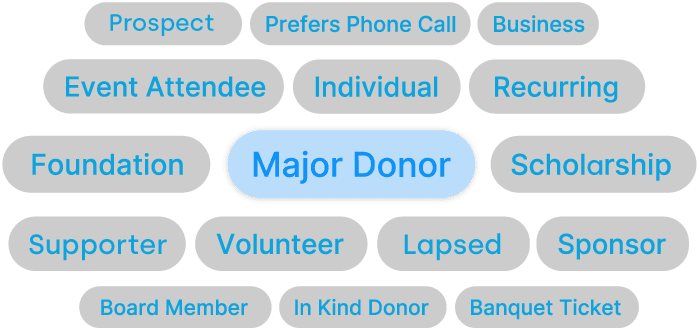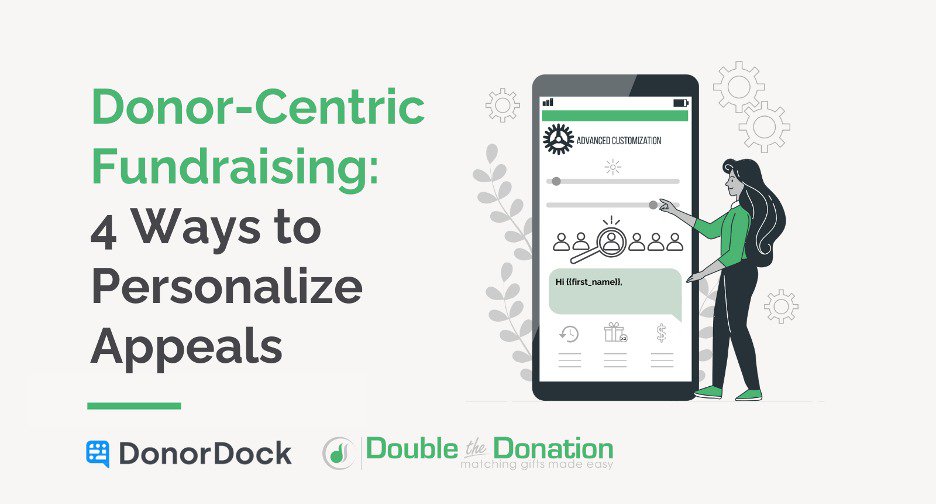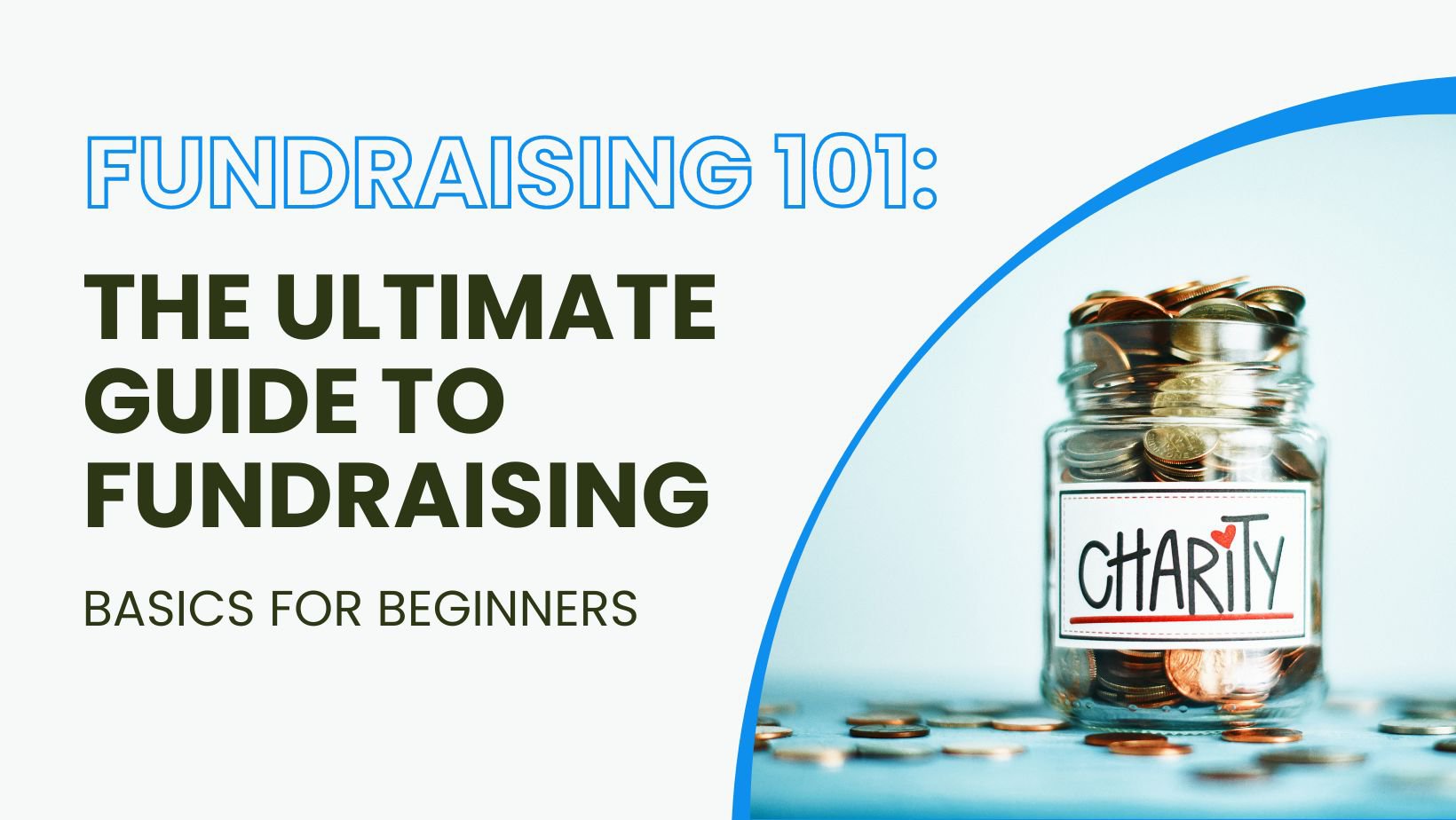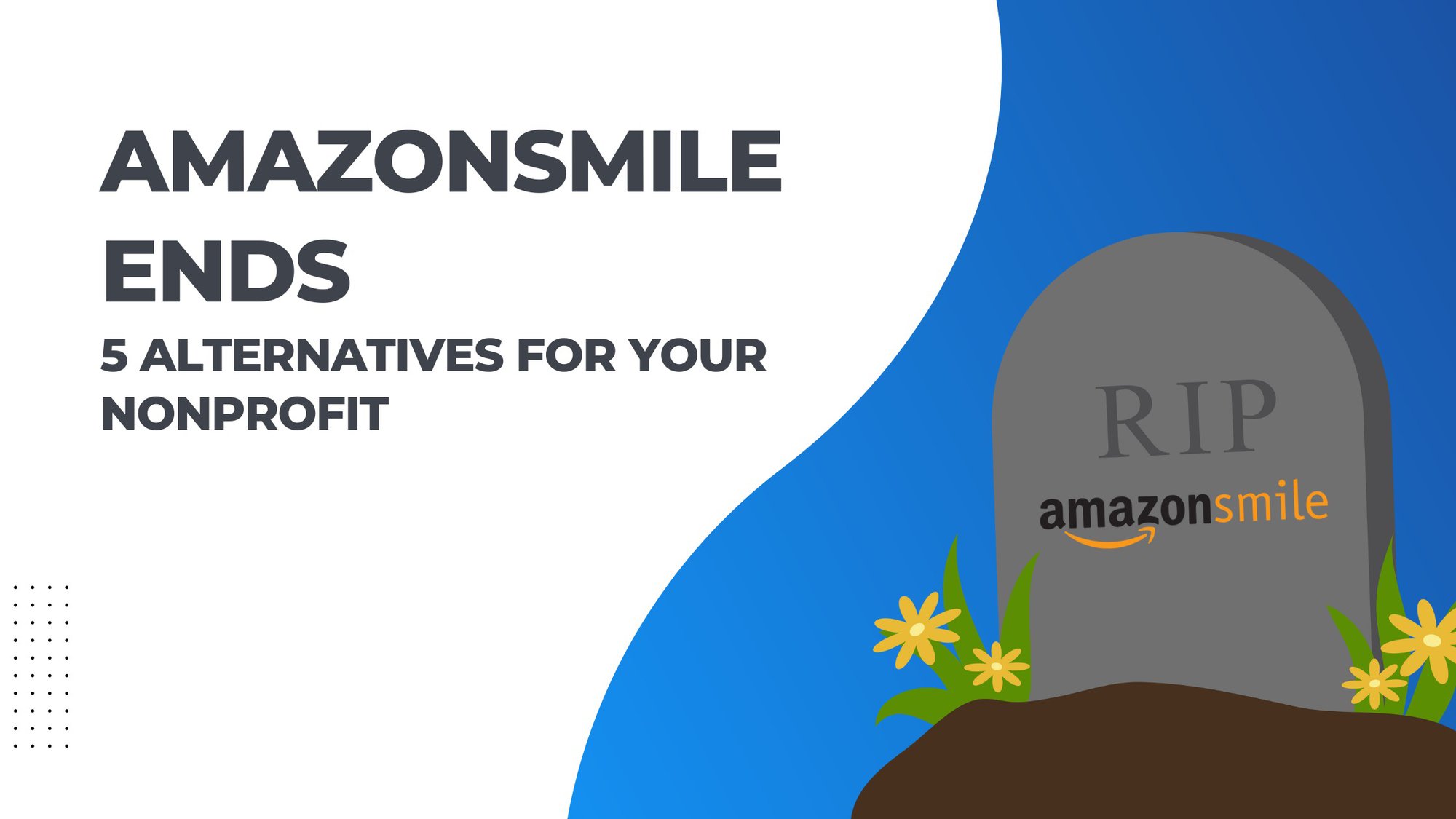Whether you're a seasoned philanthropist or a new nonprofit organization, you have the power to make a significant impact in 2024. We’ll look at 10 fundraising tips to start your 2024 off with a bang!
From digital platforms to cultivating meaningful donor relationships—let’s set the stage for an impactful year of fundraising ahead. We’ll explore how you can make 2024 a year of positive change and sustainable growth for your nonprofit.
10 fundraising tips for your nonprofit
1) After events, follow up with handwritten thank you notes
We get it – hosting an event or gala is exhausting! You’ve got so much on your plate planning beforehand, and then you’re working your butt off to pull the whole thing off during the event! Once it’s over, it’s easy to want to sit back and relax. Why not let your donor development platform do the work of sending out automatic thank yous?

But, there is also something incredibly personal about a handwritten thank you. It communicates a deeper appreciation for your donors, event attendees, and volunteers. If you’re like most small nonprofits, you’re likely strapped for time. Instead of taking this on as a solo venture, it’s a great opportunity to connect with your board members.
Before your event happens, plan and budget time to send out handwritten thank you cards. Recruit your entire staff and your board to join in. It’s a meaningful way to engage not only those who attended or gave, but also to engage your board.
“We really pride ourselves on doing handwritten thank you notes to our donors. We want everyone to have that personal touch. And so we did that, and that was a very big team effort.”
-Anna Larson on Beyond the Donation episode 2
2) Look past what a person can do for you and build relationships
When you have programs to run, and you’re trying to get donations, who has time for anything else? It’s easy to forget to build meaningful relationships with your donors. Yes, they want to hear stories about what is happening within your organization. Yes, they want to know how they play a part in furthering the good you’re doing.
But, it’s important to connect with your supporters on a deeper level – to build a relationship with them. Depending on the size of your organization and donor pool, you might not have time to meaningfully connect with everyone. This is where donor segmentation can help.

Be intentional in building relationships with people who have already invested a lot of time or money into your organization. They’ve communicated that they think you’re important, even if they aren’t getting anything back. Now it’s time for you to show them that they matter. It’s not about what they can do for you, it’s about simply valuing them.
“it's looking past what the person can do for you and looking to who they are and wanting to connect with them on that deep level.”
-John Fisher on Beyond the Donation episode 3
3) Show donors the ROI of their investment through storytelling
One powerful way to grow deeper connections with donors is by showing the tangible Return on Investment (ROI) of their donations. You can do this through the art of storytelling. More than just numbers and statistics, stories have the unique ability to humanize the impact of a donor’s gift, resonating with donors on a personal level.
A compelling story showcases the real-world transformations made possible by their support. Send an email or text message to your donor list and let them see the concrete impacts of their generosity to bring positive change.

“Find the person who is the best storyteller who will add language, inflection, and imagery that connects to the story. You have to show return on investment to the donor. You have to show them that there's an impact in lives that are being changed. And that should be ninety percent of your messaging.”
-Rachel Cardwell on Beyond the Donation episode 6
4) Pick up the phone and call your donors
In the age of digital, there's a timeless charm in the simple act of picking up the phone and calling your donors. Embrace the warmth of personal connection as you embark on this delightful journey of reaching out. Remember, your donors are more than just an ATM; they're partners in your mission. Share updates, express gratitude, or simply check in – a phone call can turn a routine transaction into a meaningful conversation. So, dial into the joy of genuine connection and make each call a celebration of the invaluable support that keeps your mission alive.
Need inspiration for who to reach out to? Smart Nudges on the ActionBoard® utilize your donor data to serve up a daily five for you to contact!

“I have never in the twenty years that I have been doing fundraising, never been punched in the face for calling to say hi or thank you.”
-Patrick Kirby on Beyond the Donation episode 7
5) Prioritize fund accounting for successful bookkeeping and storytelling
Fund accounting is an important form of accounting for all nonprofits. A fund is any area in your nonprofit that needs to be tracked separately from the general fund. This includes things like grants, restricted or temporarily restricted funds, scholarships, campaigns, or dollars raised for specific projects.

With fund accounting, you manage these funds independently from one another, so that you have a clear picture of how donations are being used and aren’t overspending in one fund. It’s important that the donations you receive are being used in a way that aligns with donor intent.
If you have a clear understanding of how you’re using gifts, you can paint a compelling story for your donors. Share how their donations have moved the needle forward. Give specific impacts their gifts have had on their community. A CRM with fund accounting built in can make this task super easy.
“Fund accounting is really looking at the different buckets of where your money is coming and going. You want to know that for yourself because having that clarity on where your money really is going will help you tell the story of your organization a lot better, then just thanks for the money.”
-Maddie Craig on Beyond the Donation episode 8
6) Tell a story that is 80% you, 20% me
When it comes to storytelling, it’s important to strike the perfect balance between ‘you’ and ‘me.’ Aim for that magical 80% – let the spotlight shine on the experiences, aspirations, and challenges of those you serve. Then, gracefully waltz in with that crucial 20%, where you outline how your nonprofit becomes a catalyst for positive change. This balance ensures that your narrative remains relatable, empathetic, and firmly anchored in the shared experiences of your audience.
“A good rule of thumb that I always talk about in storytelling is eighty percent you, twenty percent me. So if you're talking to your community, and you're saying, ‘you, you, you’, and then ‘we are helping you with that’ that can be a really good way of making sure that you don't talk about yourself in their storyline.”
-Rob Burke on Beyond the Donation episode 10
7) Create a compelling promo kit
A promo kit, short for promotional kit, is a collection of promotional materials, information, and images designed to showcase and promote your nonprofit. It’s used to provide media, press, partners, and other stakeholders with comprehensive and engaging content that highlights key aspects of what they are promoting.
When you have a promo kit, you can easily send it out to your supporters to help spread the word about your nonprofit. It simplifies the process for them, while also encouraging them to use hashtags, images, logos, and messaging that aligns with your mission.
To start, segment your donors and volunteers, then send your promo kit to those who are the biggest advocates and supporters of your nonprofit.
“Your general promo kit is one document that has your mission, your vision statement, and bullet points that people need to know. It's going to have sample images and copy for Twitter, Facebook, Instagram, or TikTok and Reels ideas all packaged up in one nice little thing. It's important that this isn't just for the platforms you're on, but all platforms because other people might be on those platforms.”
-Sami Bedell-Mulhern on Beyond the Donation episode 12
8) Use your data to communicate with transparency
In the era of data-driven decision-making, your nonprofit's data is more than just numbers; it's a powerful tool for building trust and fostering transparency. When you track data in your nonprofit CRM, reports give you the necessary insights to communicate openly and honestly with your supporters and donors.

Reports allow you to paint a comprehensive picture of the work your nonprofit is doing. By presenting data-backed stories, you establish credibility. And credibility builds trust. Transparent communication based on concrete data not only strengthens your relationship with supporters but also empowers them to understand the impact of their gifts.
“Use all the data that you have. Figure out a way to understand that 360 degree view of your supporter/donor and make sure that you cultivate them. Be transparent. Communicate the results”
-Steve Johns on Beyond the Donation episode 13
9) Update your homepage
If someone makes a terrible first impression, are you eager to dive deep and get to know them better? No? Well, your nonprofit’s homepage is often the first impression for many potential supporters.
Your nonprofit's website serves as the beating heart of your online presence. It's the go-to destination for potential donors, volunteers, and anyone else curious about your cause to gain a better understanding of your nonprofit.
When it comes to first impressions, your homepage takes center stage as the first encounter for potential donors. Adhering to nonprofit website best practices ensures that your organization leaves a lasting and positive mark from the get-go.
Use your homepage to inspire action, explain your mission, and encourage visitors to engage with your cause. A website that instills trust in your donors increases the chance of donations and builds meaningful connections. Make sure to have a donation form on your website that is easy to find and use.

“Most nonprofit websites should put a lot of their effort into their homepage. Maybe the whole website needs a little bit of help, but the homepage is a really big opportunity.”
-Austin Hattox on Beyond the Donation episode 16
10) Try out A/B testing to improve your messaging
A/B testing, also known as split testing, is used to compare two versions of a webpage or content to determine which performs better. The process involves using two versions of a piece of content, A and B, to similar groups of users and measuring their responses.
A/B testing is valuable in the nonprofit world, as it allows you to see which email headlines, website designs, newsletters, or other content resonates with your supporters and leads to a higher percentage of donations. You can use donor segmentation here to create two groups of donors to a/b test against.
“Our our motto is ‘Always be testing.’ It’s trial and error.”
-Briana Ruloma on Beyond the Donation episode 18
Conclusion
As we wrap up this journey through essential fundraising tips for the year ahead, it’s important to remember that the nonprofit landscape is always changing. Embracing strategic approaches to fundraising is more crucial than ever.
From the heartfelt touch of handwritten thank-you notes to the timeless charm of a personal phone call, each fundraising tip serves as a stepping stone toward fostering authentic connections with donors.
The power of storytelling, whether showcasing real-world impact or finding the delicate balance between 'you' and 'me,' helps nonprofit messaging have resonance and relatability. Donor relationships are elevated by transparent communication and the sharing of data alongside a well-crafted story.
When it comes to digital marketing, your nonprofit should focus on creating a promo kit that simplifies engagement for supporters, and your nonprofit’s website. Your website, particularly the homepage, is often the first impression, influencing potential supporters to engage and invest in your cause.
And, as you implement these fundraising tips, A/B testing is a valuable tool to make sure your messaging and design resonate with your donors.
With these tips in hand, let's look forward to 2024 as a year of positive change, sustainable growth, and a shared vision of making a lasting impact.
DonorDock is a donor management solution built for small nonprofits. Try for free
Check out Beyond the Donation to get more fundraising tips, donor management tricks, and insight into nonprofit best practices














